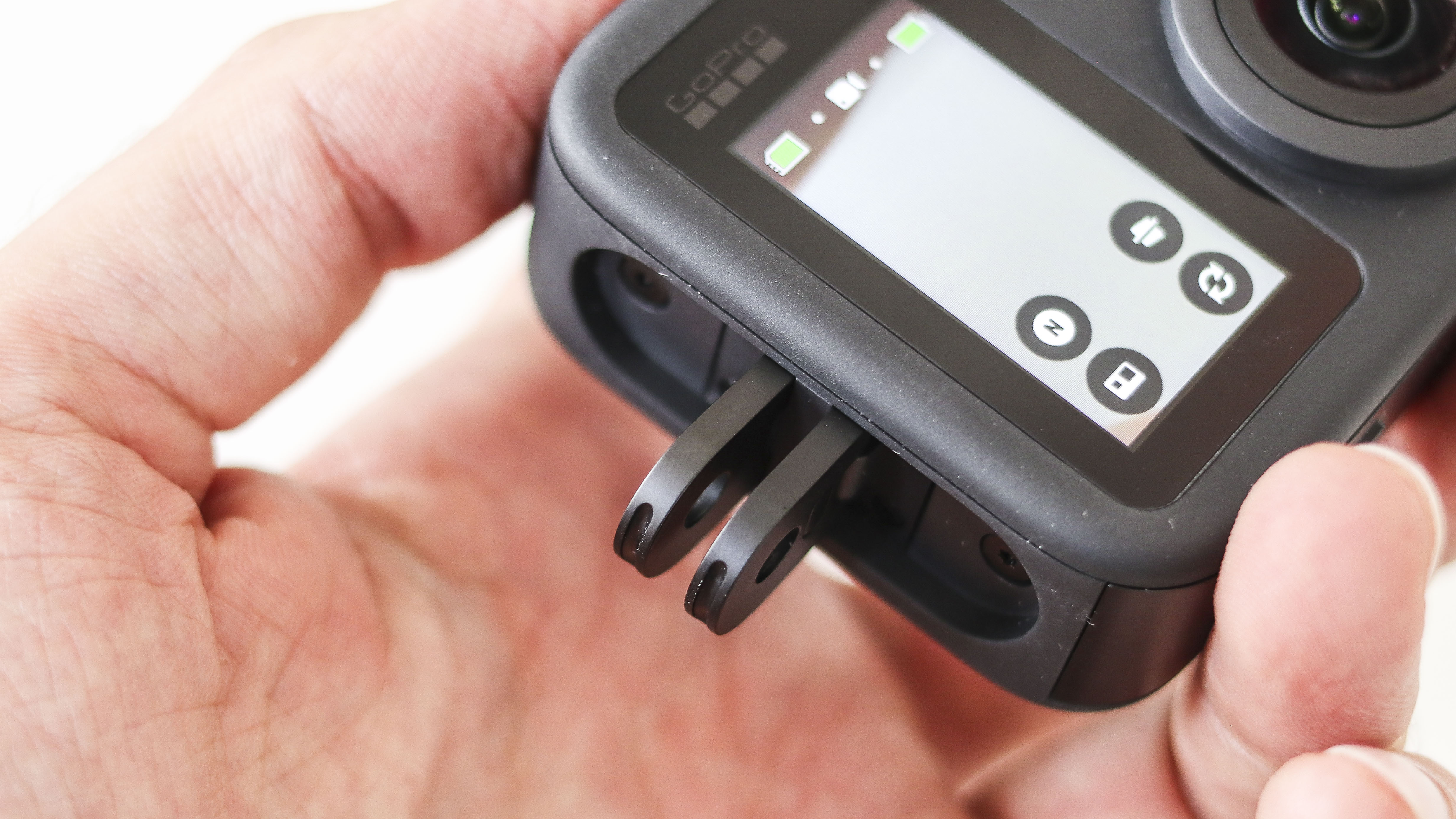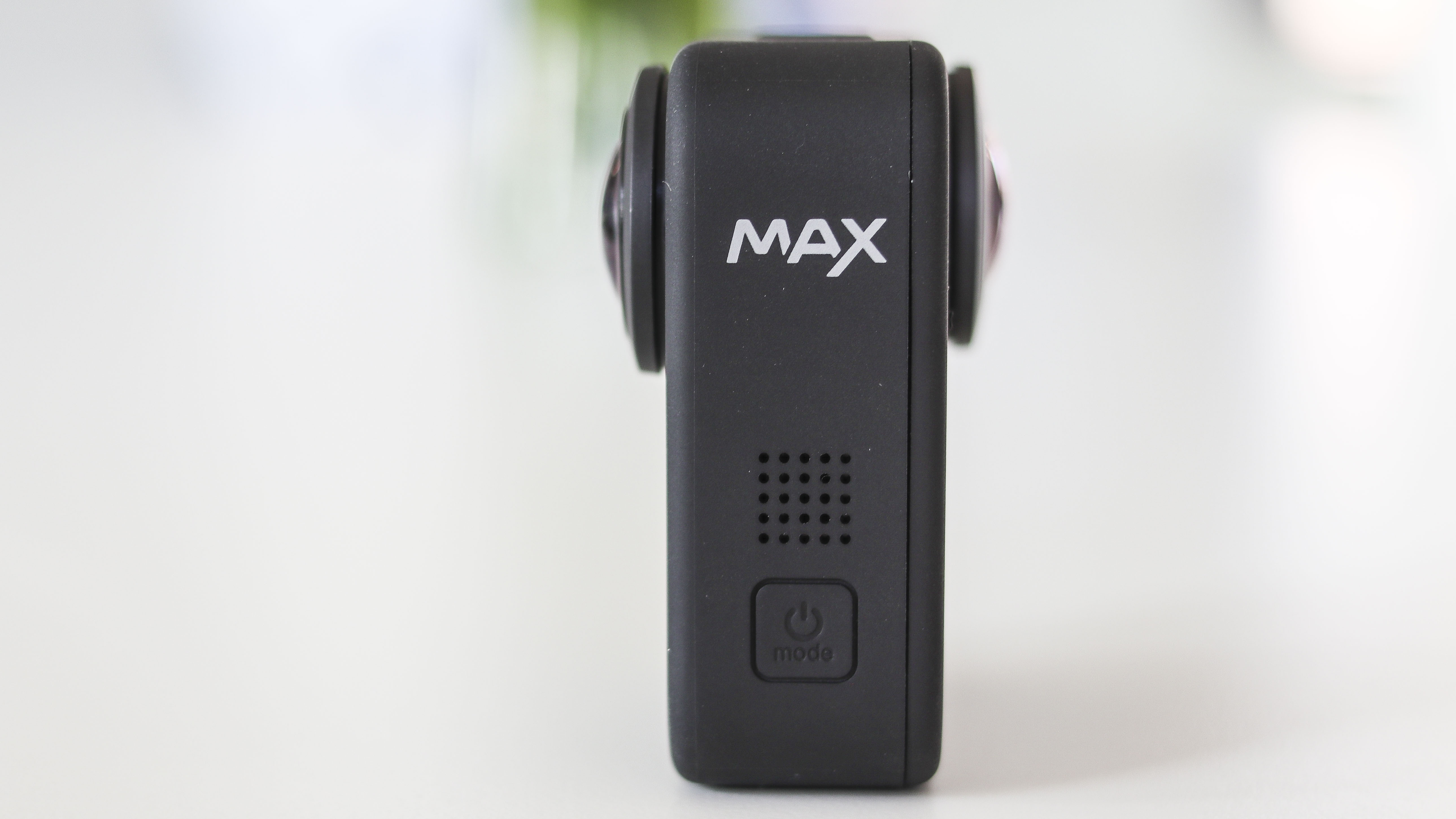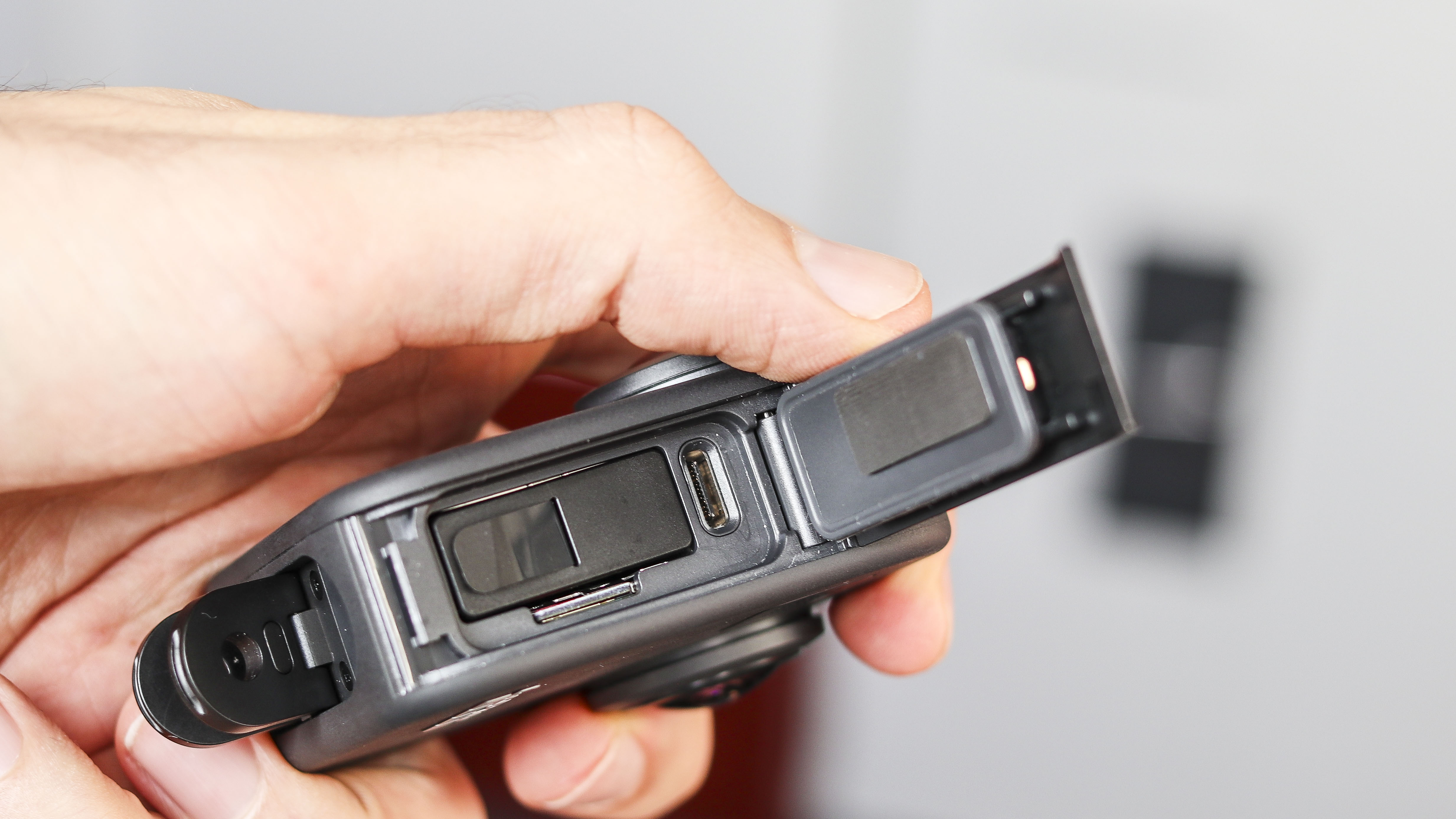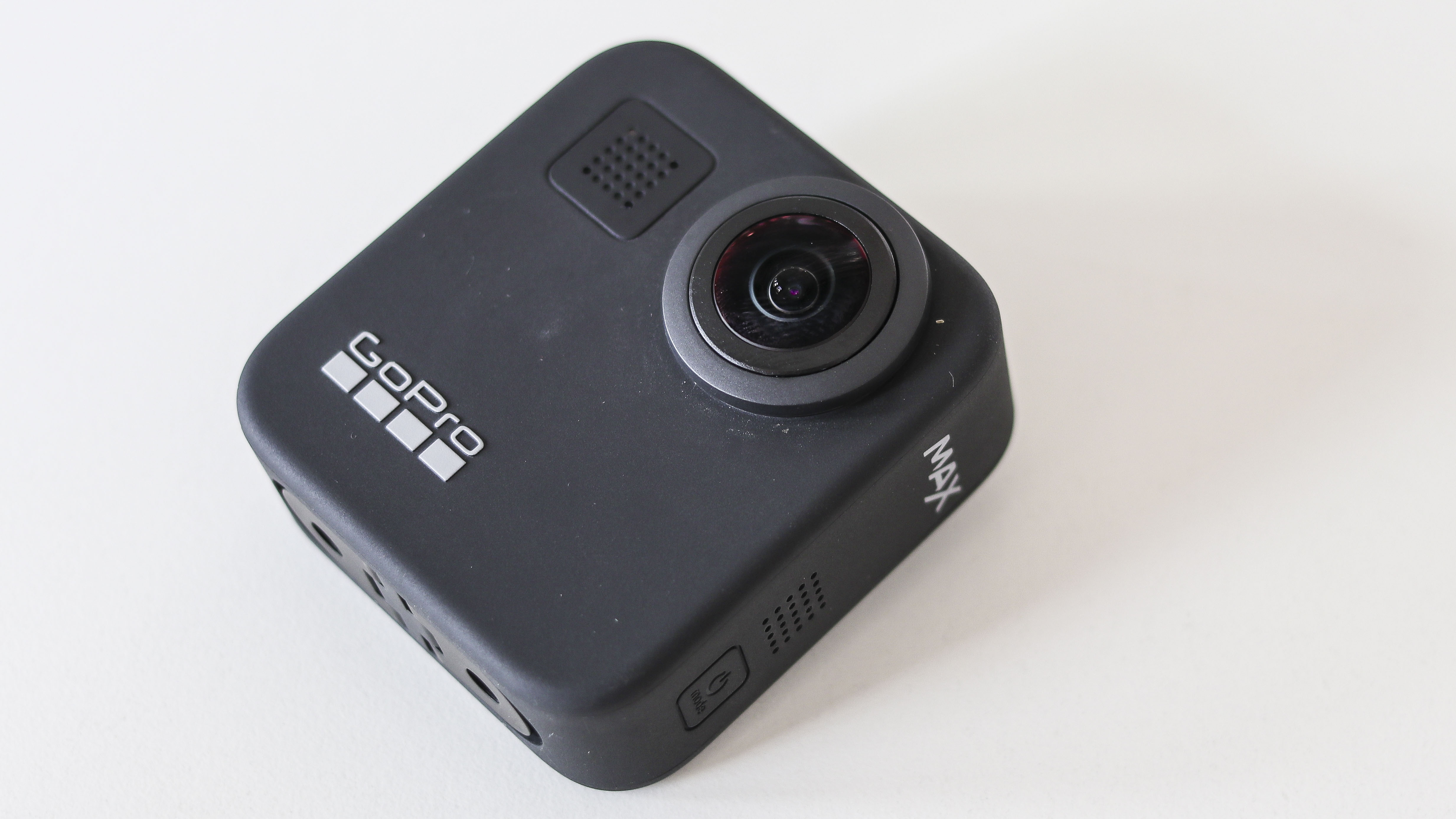Digital Camera World Verdict
We went into reviewing the GoPro Max thinking it was a 360-degree action cam for enthusiasts; we’ve come out realizing everyone could benefit from having one. Hit record and forget about framing (within reason), then edit your footage in the app. The GoPro Max builds on the Insta 360 One X’s success with better quality capture and microphones, doubling up as a vlogging cam and an action cam too. We would have loved 4K single-camera capture and the app experience could use some work, but given everything the Max can do, it’s still a sensational step towards what could be the future of film making.
Pros
- +
Creates great-looking, dynamic clips
- +
Multi-function capabilities
- +
Solid app experience
Cons
- -
No traditional 4K video capture
- -
No PC editing app (as of Nov 2019)
- -
App experience needs work
Why you can trust Digital Camera World
The GoPro Max, like the Insta 360 One X, is special. Replacing the GoPro Fusion, GoPro’s first-gen 360 camera, the Max makes recording in every direction something that anyone can benefit from.
Thanks to the improved GoPro app, you can now edit across 360-degree scenes on your smartphone, zooming in and out and keyframing, so you needn’t lug a VR headset around to get the most out of your omnidirectional clips.
The Max is definitely no one-trick pony though, doubling up as a traditional action cam just like the GoPro Hero 8 Black. Like the DJI Osmo Action, it’s also a solid selfie vlogging cam, with the rear camera and screen capable of working in tandem, and there are six microphones on it as well for a fuller, directional audio capture. In turn, it isn’t trying to be the best action camera, but rather, the only camera you’d want to take with you on an adventure.
UPDATE: In 2024, the Insta360 X4 upped the game with 8K 360 and the company has free plugins for FCPX and Adobe Premier as well as an excellent free app for Mac, Android & iOS which includes reasonably successful automatic subject tracking. There is also the cheaper Insta360 X3 (that camera's predecessor) you should consider.
UPDATE In 2021, two years after its launch, the GoPro Max is still a very compelling 360 camera, but its chief rival, Insta360 has been busy. The Insta360 One X2 is a new and updated version of the original shirt-pocket One X and even more brilliant, while the Insta360 One R Twin Edition fixes one of our complaints about the GoPro Max – no 4K 'action cam' mode – with a modular design that lets you swap out the 360 module for a regular 4K camera module. There's even a 1-inch mod sold separately for a step up in sensor size and image quality. Exciting times!
This all sounds great, but after a month with it, does the GoPro Max end up being a Jack of all trades and a master of none? And can it join the best GoPro hall of fame?
See also GoPro Max vs Hero 8 • GoPro Hero 8 vs 9
The best camera deals, reviews, product advice, and unmissable photography news, direct to your inbox!
Design and screen
Just like the Hero8 Black and Hero7 Black before it, the Max has a matte rubberized body. This time, there’s a lens on either side, though a screen on just one, and this GoPro features no less than six microphones dotted across its body. The touch-sensitive LCD display is 16:9 and 1.7-inches. It’s responsive, and gets bright too, perfect for indoor and outdoor use.
At the top of the Max is a record button which can fire up a customizable recording preset from cold. To the left is a power/mode button that switches on the camera and cycles through shooting modes, and there’s a battery flap too, which is where you’ll find the microSD card slot and USB-C port.
As introduced across the Hero8 line, ingenious flip-out mounting feet pop out of the base of the Max, reducing the need for housing.
The GoPro Max is bigger than the Hero8 Black, so doesn’t support the same GoPro mods. That said, the Max already has a selfie screen, and with those six mics, its standalone audio is decent, so there’s less need for external solutions.
Another point to note; the Max’s lenses aren’t quite as scratch-resistant as those of the Hero8 Black, who’s glass GoPro has called its toughest to date. In addition, unlike the Hero7, the lenses aren’t protected by removable glass either - so try not to scuff this camera up too much if you pick one up. On the plus side, in the box, you’ll find some rubber lens guards for when the camera isn’t in use.
All this isn’t to say the GoPro Max isn’t durable in its own right; it’s waterproof up to 5m, and if you know you’re going to be throwing some rough and tumble its way, you can wedge some half-orb lens-guards onto either side, though these do impact the quality of video captured.
Video footage shot with the GoPro Max
360 video
Replacing the GoPro Fusion, the Max is a 360-degree camera, shooting 5.6K footage in all directions. Rather than compare it to the Fusion, though, it makes more sense to compare it to the Insta 360 One X, its main rival, which is slightly pricier in the UK, but slightly cheaper in the US.
The GoPro Max is squatter, making it shorter, so is more ergonomic to use as an action camera, however, it’s thicker too. This likely has something to do with the first difference in footage quality - the stitch-line. The GoPro Max has a more visible line than the Insta 360. That said, everything else when it comes to video quality, however, leans in the GoPro Max’s favour.
The 5.6K footage captured gives scope for comfortable 720p-grade capture with a fair bit of cropping in. Colours are richer than those captured by the Insta 360 One X, and while there’s no HDR mode on the Max, we didn’t miss it.
Video footage shot with the GoPro Max
The great thing about 360-degree capture is that stabilization looks sensationally steady, and the GoPro Max’s footage is a testament to that fact. When light is abundant, it looks like the camera is floating on a gimbal or drone.
As with all 360-degree cameras, detail is stronger in the centre of each lens, and weakest towards the stitch-line. In turn, while you can be relaxed with your framing, you’ll want to be mindful of that fact.
Additionally, when faced with intricate backlit detail around the edges of each camera’s field of view, chromatic aberration can creep in, with purple fringing being very noticeable in the branches in the footage above. The footage from the forest was the worst fringing we experienced in around a month with the camera though, with most cityscapes and country scenes handled beautifully.
When the lights drop, that’s when judder creeps in with every footstep - so you’ll definitely want to tread lightly when capturing night-time content.
While the GoPro Max won’t be able to handle pitch-black scenes, you can see how it handles walking through city streets with plenty of light pollution below - perfectly usable footage for social sharing, though not something we’d drop into a feature-film; at least not straight out of the camera.
Video footage shot with the GoPro Max
Rounding off 360-capture is Max TimeWarp, a timelapse mode which can be edited in much the same way as the GoPro Max’s standard footage, but has all the impact of pans, zooms and tilts with the added bonus of compressed time.
Action and vlogging
When using it as a traditional action camera, the GoPro Max can’t quite stack up to a standalone Hero8 Black, with its resolution capping out at 1080p 16:9, or 1440p 4:3.
On the plus, it does offer a lot of versatility, shooting across four digital focal lengths: 13mm, 16mm, 19mm and 27mm. It also has smart horizon levelling. When fired up, content is always facing the right way. We literally threw the camera in the air, spinning it in the process and the picture didn’t even tilt. This is great for vlogging, helping footage captured look incredibly gimble-esque.
Advanced users will also benefit from ProTune, giving you control over the video’s bitrate, shutter speed, white balance, and more, so despite not having a cinematic look out of the camera, capture is nicely customizable.
Despite its resolution, single-lens footage looks strong, with respectable clarity for Full HD content. While less rugged than a traditional GoPro, the Max is still able to handle action with waterproofing, sensational stabilization and a GPS on-board. The PowerPano feature grabs instant ultra-wide 6MP panoramas, which look great, and traditional 4:3 photographs are shot at 5MP - poor indoors and at night, decent in well-lit environments.
GoPro app
Just like the Hero8 Black, the Max pairs with the Android and iOS GoPro app. When editing 360-degree footage with it, you can transform kaleidoscope-style video into something that looks great on a flat-screen.
Using keyframes, the app processes out footage that smoothly pans and zooms across your video, making incidental, unintentional capture look seriously special. That said, the iOS app is more fully-featured and reliable than the Android app, with more control over transitions and a more stable phone-to-camera connection.
The app, in fact was probably the least enjoyable aspect of the whole GoPro Max experience. When editing, we would have loved horizon levelling to help keep everything level, not to mention object tracking so that the keyframing process could have been a bit more automated.
More of a bugbear, the Android app saves files within it - not in a standard file-system. 360-degree footage can’t be batch shared, so in order to access our files from the phone - as we’d deleted them from the camera to free-up space - we needed to sign up for GoPro’s cloud service and upload them, then download them to our PC. This whole process took hours and could have been avoided with simpler file management.
GoPro’s optimisation for Apple products extends to computers, with GoPro’s desktop software only supporting 360-degree edits for Mac OS. If you’re a Windows user, you’ll have to make do with GoPro Quik, download the 360-degree footage and edit it in Premiere Pro after installing a plugin, or us the mobile app.
Battery and connections
As for the battery life, the GoPro Max’s 1600mAh capacity has you covered for a day of 360-degree shooting, vlogging and smartphone pairing provided you’re shooting short clips - a few 1-2 minutes every hour or so. For any more sustained use, pack a spare or a USB-C power bank.
The GoPro Max’s sound recording is impressive, grabbing what GoPro calls spherical audio. That said, its mics are sensitive and if you’re holding the camera, you may well be covering or rubbing one. In turn, vloggers should invest in a selfie stick rather than hand-holding the camera to be safe.
The Max also supports voice control which works well - another one-up over the Insta 360 One X, and features a GPS too. With WiFi onboard, the camera doesn’t just connect to your phone, it also connects to the net and is able to livestream at up to 1080p directly to YouTube, just like the Hero8 Black.
Verdict
It’s impossible to not be impressed with the GoPro Max. GoPro has given 360-degree footage a new lease of life, building on what the Insta 360 One X achieved last year – and adding an action camera element to the mix, amongst other features. While we would have loved 4K single-camera capture, and the app experience needs some work, the GoPro Max is still a fantastic tool and a solid win for GoPro and content creators everywhere.
Read more:
• The best 360 cameras
• The best cameras for live streaming
• Best action cameras
Basil Kronfli is a freelance technology journalist, consultant, and content creator. He trained in graphic design and started his career at Canon Europe before moving into journalism. Basil is also experienced in video production, independently running the YouTube channel TechEdit, and during his time at Future, he worked alongside the Digital Camera World team as a senior video producer.







